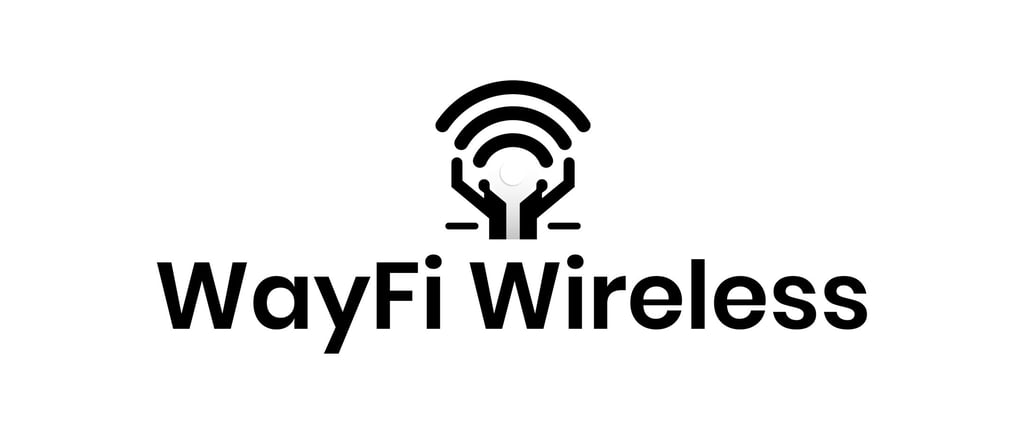Hotspot 2.0/Passpoint vs Captive Portal: The Future of Seamless Wi-Fi
Discover the differences between Hotspot 2.0/Passpoint and Captive Portals. Learn how Passpoint enables secure, seamless Wi-Fi connectivity, eliminating the need for manual logins and outdated portals.
BLOG
WayFi Wireless
1/29/20253 min read


Hotspot 2.0/Passpoint vs. Captive Portal: The Future of Seamless Wi-Fi
When it comes to public Wi-Fi networks, two common approaches stand out: Hotspot 2.0/Passpoint and captive portals. While captive portals have been the standard for years, offering Wi-Fi through login screens, they often present usability and security challenges. On the other hand, Hotspot 2.0/Passpoint represents a newer, smarter solution for secure, seamless connectivity.
In this article, we’ll break down the key differences between Hotspot 2.0/Passpoint and captive portals, exploring their advantages, disadvantages, and use cases to help you understand which is the better choice for modern Wi-Fi networks.
What is Hotspot 2.0/Passpoint?
Hotspot 2.0, powered by Passpoint technology, is a Wi-Fi standard that enables automatic, secure, and seamless connections to wireless networks. Instead of requiring users to manually select a network or enter credentials, Hotspot 2.0 leverages secure authentication protocols (like SIM-based credentials or digital certificates) to connect devices automatically.
This technology is ideal for environments where reliable connectivity is critical, such as airports, hotels, and enterprise networks.
What is a Captive Portal?
A captive portal is a web page that users are redirected to when connecting to a public Wi-Fi network. Typically, users must:
Log in with a username and password,
Accept terms and conditions, or
Provide personal information like an email address.
Captive portals are commonly used in coffee shops, retail locations, and other public spaces to grant access to Wi-Fi networks.
While they’ve been a standard solution for years, captive portals have several drawbacks, particularly around security, usability, and scalability.
Key Differences Between Hotspot 2.0/Passpoint and Captive Portals
Connection Process:
Captive Portal: Manual login via a web page
Hotspot 2.0/Passpoint: Automatic, seamless authentication
Security:
Captive Portal: Often less secure; relies on shared passwords
Hotspot 2.0/Passpoint: High-level encryption with WPA2/WPA3
Ease of Use:
Captive Portal: Requires user intervention; disruptive
Hotspot 2.0/Passpoint: Hassle-free, automatic connections
Roaming Support:
Captive Portal: No roaming capabilities
Hotspot 2.0/Passpoint: Seamless roaming between networks
User Experience:
Captive Portal: Inconsistent and cumbersome
Hotspot 2.0/Passpoint: Streamlined and effortless
Data Collection:
Captive Portal: Manual (users must input details)
Hotspot 2.0/Passpoint: Automated via carrier integration
Why Hotspot 2.0/Passpoint is the Future
1. Seamless Connectivity
Hotspot 2.0 eliminates the need for captive portal login pages. Once a device is configured with Passpoint, it automatically connects to a trusted Wi-Fi network without any user interaction.
This is particularly useful in high-traffic areas like airports, where users often need quick and reliable connections.
2. Enhanced Security
Captive portals often rely on weak security protocols, like shared passwords or open networks, making them vulnerable to attacks such as man-in-the-middle (MITM).
Hotspot 2.0, on the other hand, uses WPA2-Enterprise or WPA3 encryption and EAP (Extensible Authentication Protocol) for robust, certificate-based authentication. This ensures that only authorized users can access the network.
3. Seamless Roaming
Passpoint supports Wi-Fi roaming agreements, allowing users to move between different networks without losing connectivity. This functionality is especially beneficial for travelers and businesses with multiple locations.
For example, a user could connect to a Passpoint-enabled network in an airport and remain connected when they reach their hotel, without needing to log in again.
4. Improved User Experience
Captive portals often frustrate users with slow-loading login pages, inconsistent connections, and interruptions. With Hotspot 2.0, users enjoy a frictionless experience, with no need for repetitive logins or manual network selection.
Challenges of Captive Portals
While captive portals offer a basic level of access control, they have several limitations:
Time-Consuming Login Processes: Users must navigate through login pages, which can be slow and cumbersome.
Inconsistent Connections: Many devices struggle to reconnect automatically after a session timeout.
Poor Security: Passwords are often shared widely, making networks vulnerable to unauthorized access.
Limited Scalability: Captive portals are not well-suited for large-scale networks or enterprise environments.
Use Cases for Hotspot 2.0/Passpoint
Hotspot 2.0 is ideal for:
Airports and Hotels: Ensures guests and travelers have a secure, hassle-free connection.
Smart Cities: Powers public Wi-Fi networks with seamless authentication.
Retail and Hospitality: Enhances customer satisfaction with easy connectivity.
Large Enterprises: Supports secure and scalable connectivity for employees and visitors.
Universities: Provides students and faculty with consistent network access across campus.
Why Businesses Should Upgrade to Hotspot 2.0
For businesses, upgrading to Hotspot 2.0/Passpoint provides numerous benefits:
Increased Security: Protects user data with advanced encryption protocols.
Better Customer Experience: Eliminates login friction, improving satisfaction and loyalty.
Operational Efficiency: Reduces IT workload by automating network authentication.
Future-Proofing: Aligns with modern connectivity standards and supports next-generation Wi-Fi technologies like Wi-Fi 6 and Wi-Fi 7.
Conclusion
While captive portals have served their purpose for years, they are rapidly becoming outdated in a world that demands seamless, secure, and scalable connectivity. Hotspot 2.0/Passpoint is the clear choice for businesses, carriers, and public Wi-Fi providers looking to enhance user experiences, strengthen security, and future-proof their networks.
Are you ready to make the switch? Contact us today to learn how WayFi Wireless can help you implement Hotspot 2.0 and revolutionize your Wi-Fi network!

WayFi Wireless
Helpful Pages
SUBSCRIBE TO OUR NEWSLETTER
© 2024 - 2025. All rights reserved.
Browser Extentions
TOOLS
